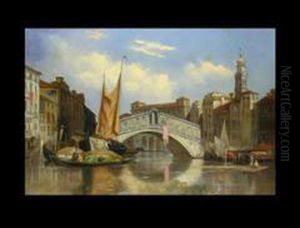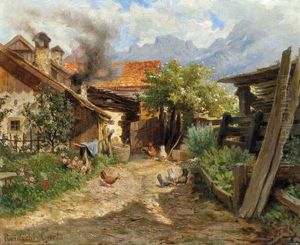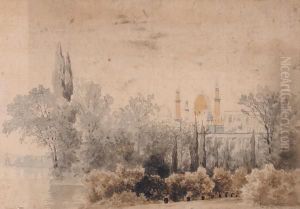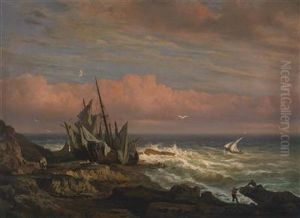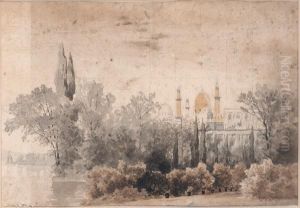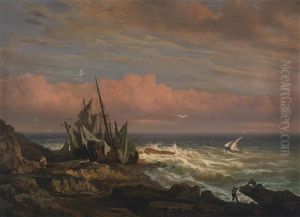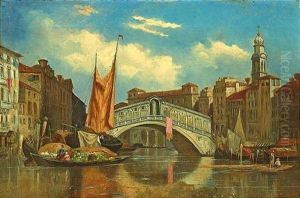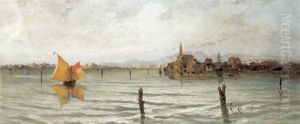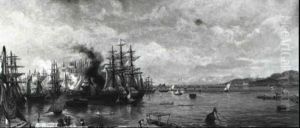Carlo Brioschi Paintings
Carlo Brioschi was an Italian painter and stage designer, particularly known for his work in the realm of theater. Born in Milan, Italy, in 1826, Brioschi grew up in a time when opera and theater were central to cultural life in Europe. He became one of the most sought-after set designers of his time, contributing to the grandeur of 19th-century stage productions.
From a young age, Brioschi was immersed in the world of art and theater, which undoubtedly influenced his career path. He initially trained as a painter, but his talents soon led him to the theater, where he combined his skill in painting with a knack for creating dramatic, atmospheric stage environments. Brioschi was a contemporary of other great set designers and painters like Philippe Chaperon and Alessandro Sanquirico, and he contributed significantly to the visual aspects of theater productions.
During his career, Brioschi worked for some of the most prestigious opera houses in Italy, including La Scala in Milan, where his stage designs contributed to the magnificent productions for which the opera house is known. His work was characterized by a keen attention to detail and a masterful use of perspective, which brought depth and realism to the sets he created.
Brioschi's influence extended beyond Italy. He also worked in other European cities, where his reputation as a master set designer grew. His designs were not only functional but also artistic masterpieces in their own right, often capturing the essence of the operas and plays they accompanied. His contributions to set design helped to elevate the visual standards of stage production during his time.
Carlo Brioschi passed away in 1895, but his legacy lives on through his contributions to the art of set design. His innovative techniques and his ability to create captivating visual experiences for theater audiences have ensured his place in the history of stagecraft. While not as widely known as some of his contemporaries in the realm of painting or sculpture, Brioschi's work remains an important part of the history of performing arts.
